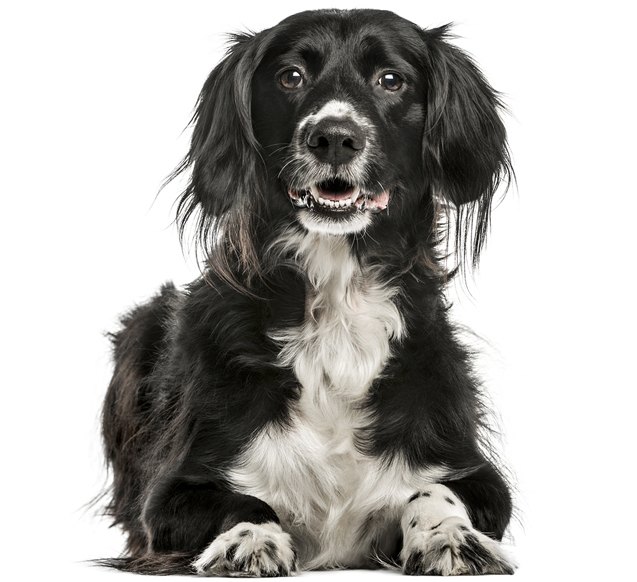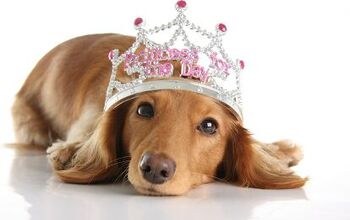Cockalier


About Cockalier
The Cockalier is a designer dog breed that is known for its pleasant personality and super cute looks. These dogs have a lot of energy and are always ready to play, and they are also full of love and loyalty.
To find out if the Cockalier is the right dog for your family, keep reading to learn a bit about this popular breed.
The Cockalier is a cross between a purebred Cocker Spaniel and Cavalier King Charles Spaniel.
The Cockalier is a designer crossbreed from the United States.
The Cockalier is a cross between a purebred Cocker Spaniel and Cavalier King Charles Spaniel.
To keep your Cockalier healthy and happy, start by feeding him a high quality dog food. There are many brands that use natural ingredients while avoiding ingredients that are allergenic or artificial, so stick with those.
You can feed your dog anywhere from ½ cup to 2½ cups of food every day, divided into at least two meals, depending upon his size, metabolism, and activity level. You can also provide your pet with some canned food for dogs, but adjust the amount of dry food that you are feeding so that he won’t gain too much weight from eating too much. Cocker Spaniels are known for their love of eating, so you should expect that your Cockalier might exhibit the same behavior.
When training your Cockalier, you will find that these smart dogs pick up on tricks and commands easily.
When training your Cockalier, you will find that these smart dogs pick up on tricks and commands easily. Use a consistent and calm approach while establishing yourself as the pack leader for the best results. You should find that crate training is easy, especially if you keep the training sessions short. And if you use positive reinforcement techniques, such as treats and praise, your dog will be even more eager to learn new commands.
A small-sized breed, the Cockalier weighs between 10 and 28 pounds.
Once you meet a Cockalier, you will fall in love with his endearing personality. These adorable dogs are eager to please and social, and they will bond with the humans they meet, although they will be a little wary of strangers at first. Plus, they make fun family pets because they get along well with children and they’re playful.
If you’re in search of a non-aggressive and calm breed that will only bark occasionally, the Cockalier would be a good choice. These smart dogs will learn quickly, and they are small enough to be comfortable in an apartment or a house.
It should be noted, however, that a Cockalier will need a lot of attention. These dogs will develop separation anxiety if they are left alone for too long, so they are not the ideal choice for individuals who work long hours or who travel a lot.
As with all other hybrid canine breeds, the Cockalier might be prone to inheriting the health conditions that commonly affects its parent breeds. However, there really is no way to determine what an individual dog’s long-term health will be, and there is no guarantee that a Cockalier will actually develop any of the health problems of its parent breeds. The best thing that you can do as a pet owner is to simply be aware of the potential health problems that could occur so that you can bring your dog to the vet as soon as symptoms occur.
When it comes to Cockaliers, you should keep an eye out for ear infections, heart problems, hip dysplasia, patellar luxation, eye ailments, syringomyelia, cancer, allergies, liver problems, obesity, bloat, hypothyroidism, skin problems, epilepsy, immune-mediated hemolytic anemia, and autoimmune hemolytic anemia.
The Cockalier has an average lifespan of 12 to 15 years.
Because Cockaliers have a lot of energy and they have a playful personality, you need to provide your pet with a variety of toys and activities that will keep him physically and mentally stimulated.
If you have a pool, you can let your dog go swimming, but these dogs also thrive on other outdoor activities, including jogs and brisk walks. And if you have an enclosed backyard, you can let your dog run around without a leash to play with toys or play games with you.
Once you meet a Cockalier, you will fall in love with his endearing personality.
The Cockalier is not recognized by the American Kennel Club, as it is considered to be a hybrid breed. However, this breed is recognized by the American Canine Hybrid Club (ACHC), the Designer Breed Registry (DBR), the Designer Dogs Kennel Club (DDKC), the Dog Registry of America, Inc. (DRA), and the International Designer Canine Registry (IDCR).
The curly and fine fur of the Cockalier will become matted easily, so you will have to brush your dog a few days per week to keep the coat smooth and clean. While your dog is shedding, he may require more frequent brushing sessions. You can also take your pet to a professional groomer to have the long fur trimmed so it’s more manageable.
Like all puppies, a Cockalier puppy will be delicate and could get hurt easily, so handle these dogs with care, and teach your kids to do the same.
Start training your puppy from as early on as possible, and also be sure to socialize your puppy by allowing him to meet and interact with a variety of people and other animals. In this way, he will grow up to be a friendly and confident adult who gets along with people of all ages, as well as other dogs and other pets.
Photo credit: Life on White

Lisa Selvaggio is a freelance writer and editor, and our resident cats-pert, with certifications in pet nutrition and pet first aid. She enjoys producing content that helps people understand animals better so they can give their pets a safe and happy home.
More by Lisa Selvaggio

























